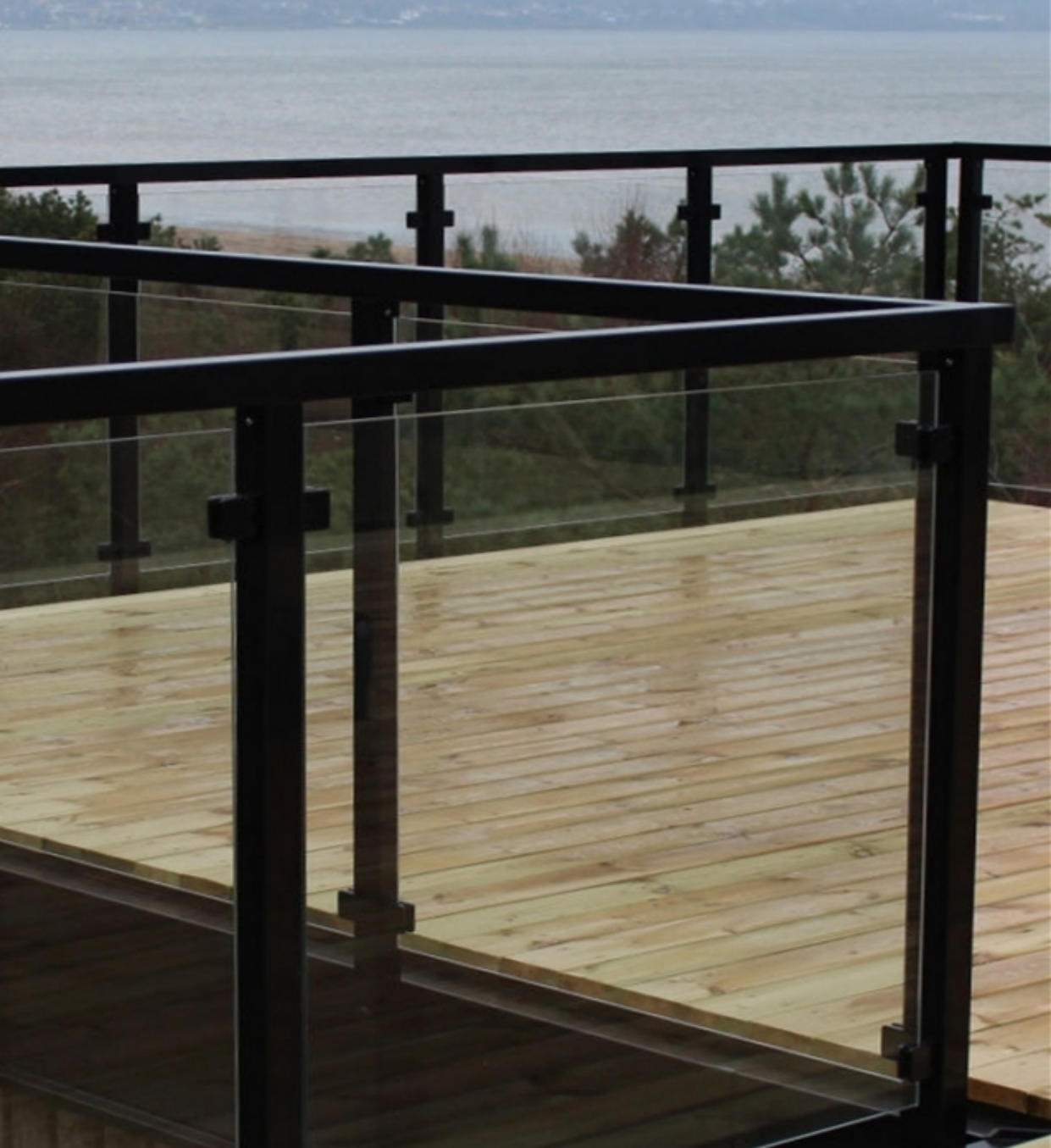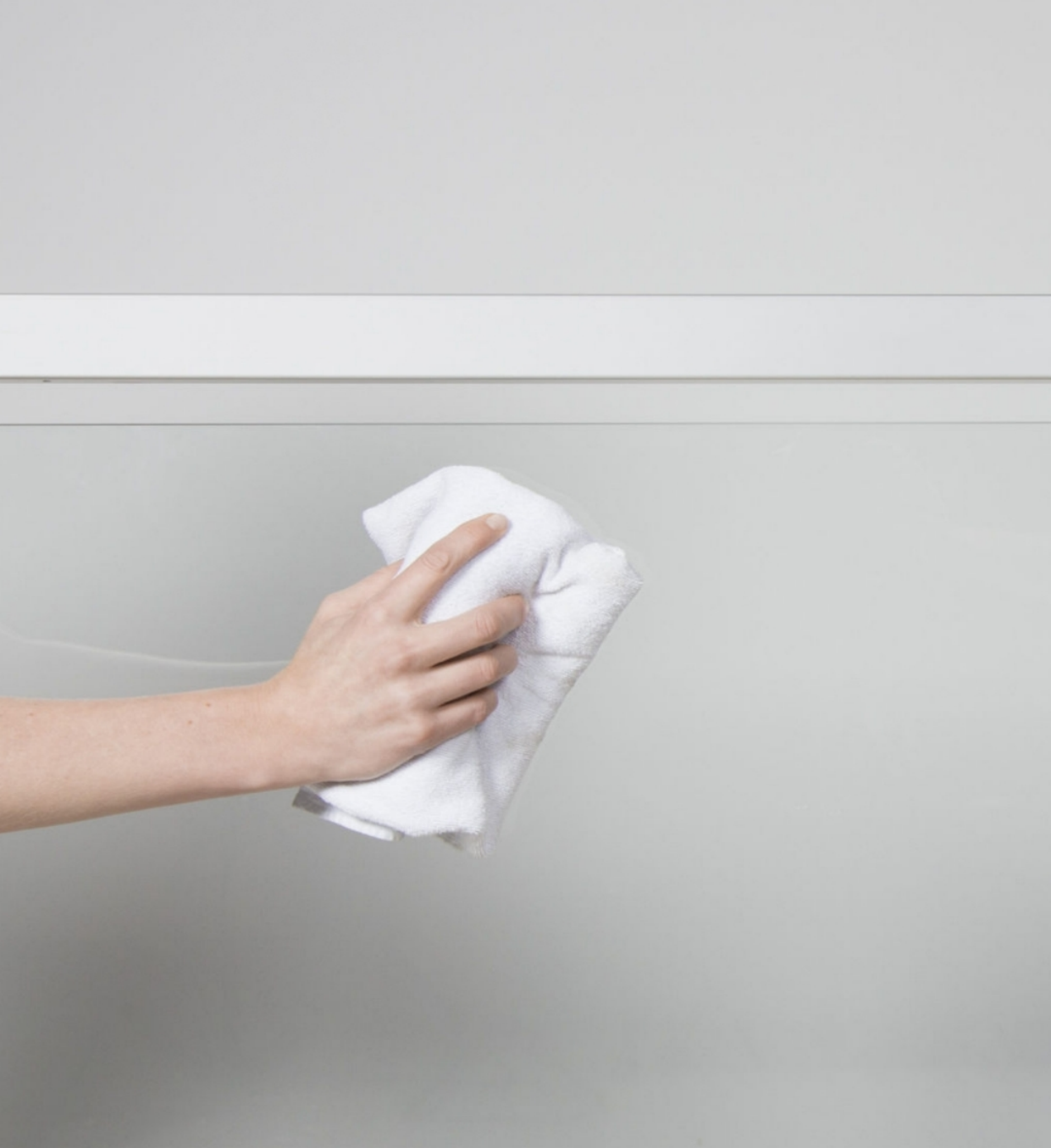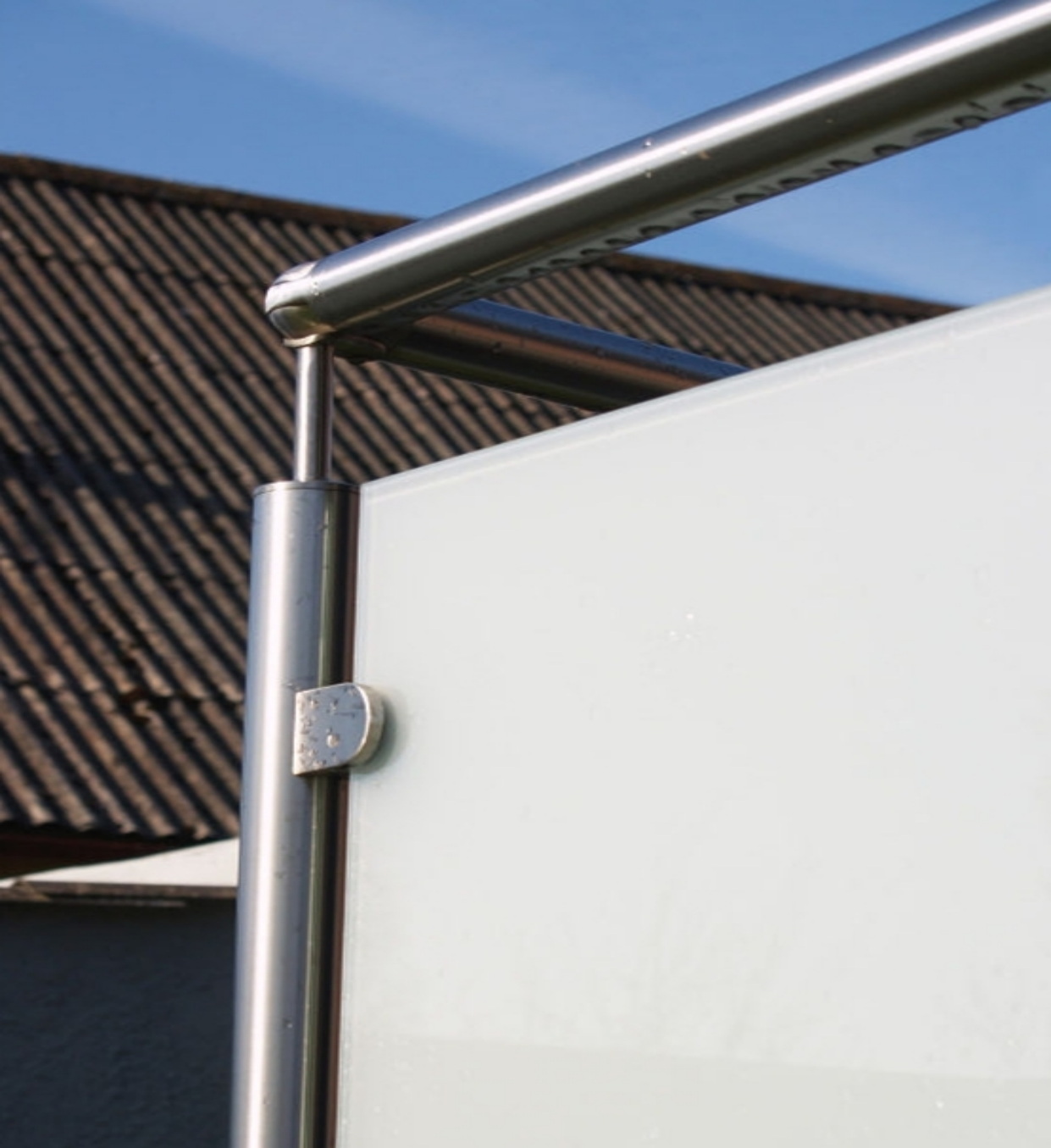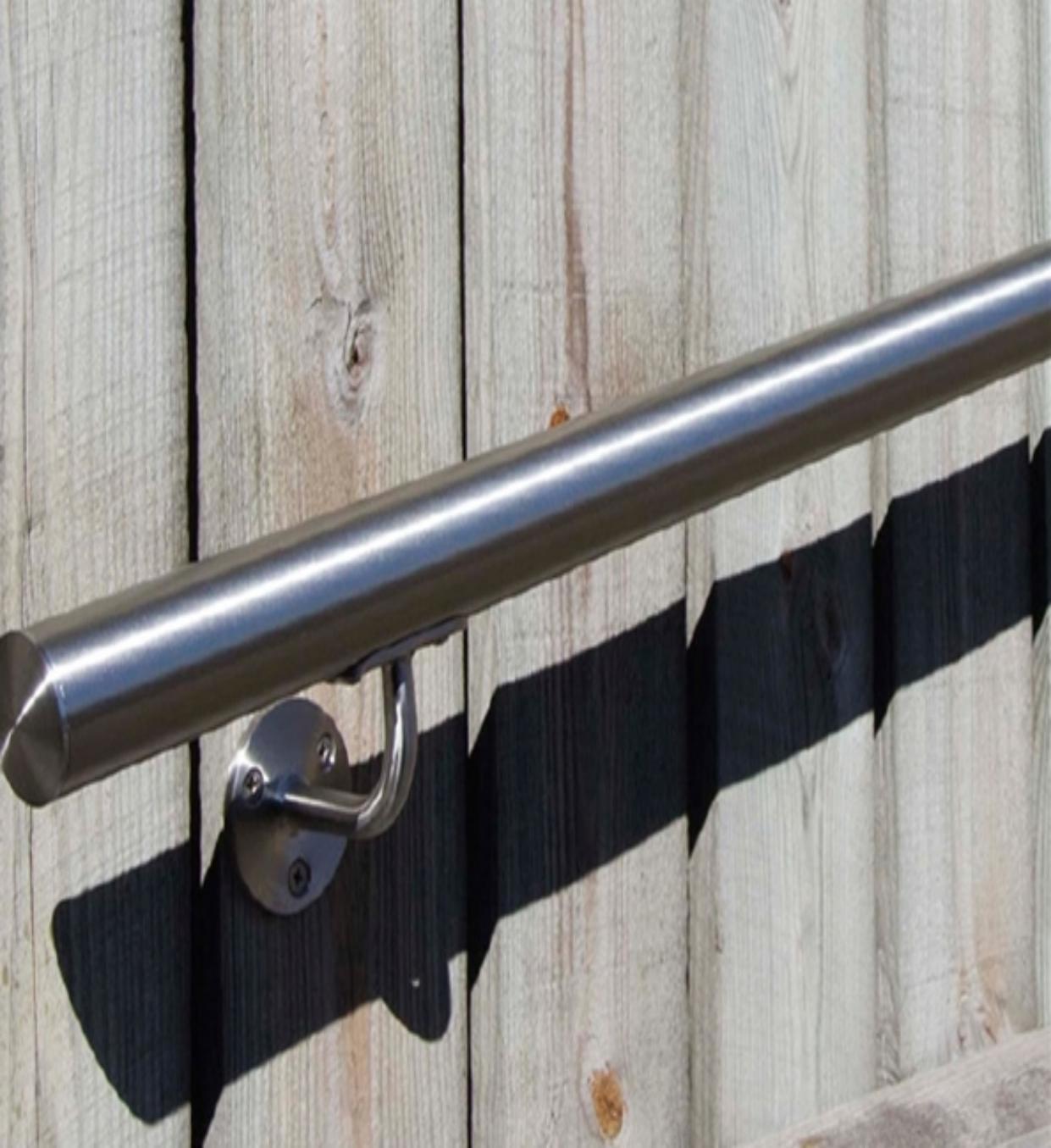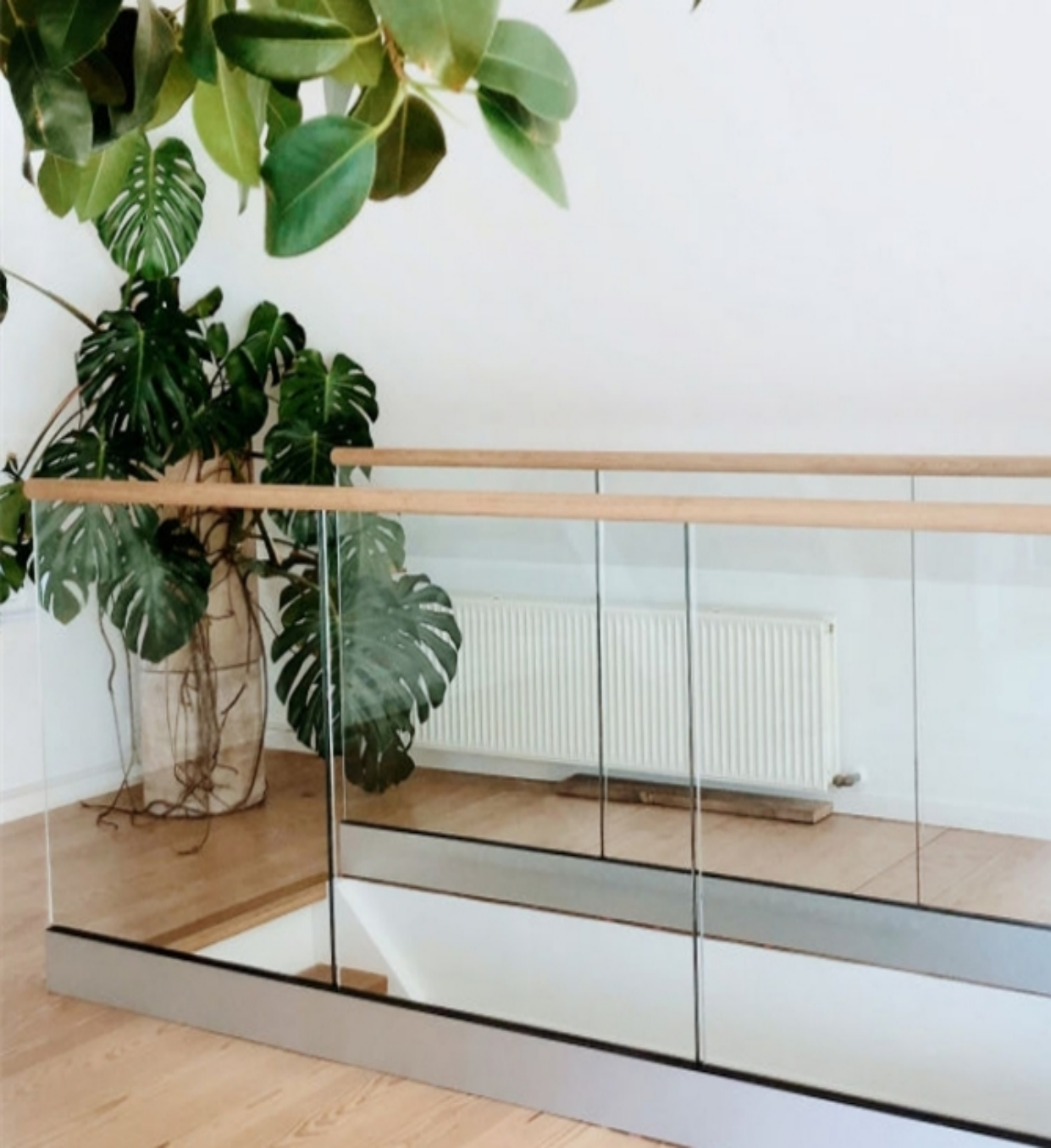Editor: View Mate All Glass Railing
In order to maintain the longivety of your glass railing, and to be covered by our warranty. We ask you to follow the recommended care instructions of your products. Depending on how you have designed your product, it may contain different materials. Follow the instructions for each material below to maintain your railing so that it both lasts and looks good for a long time to come.
Stainless details
Since stainless steel, despite its name, is not resistant to corrosion, all stainless steel parts need to be maintained and cleaned between 1-3 times a year. If the railing is installed in an environment close to the sea, cleaning and treatment may need to be carried out more often. Clean the surfaces with lukewarm water and a mild detergent together with a soft cloth.
• Remove all labels from the product parts as these can in some cases leave permanent marks on the surface over time.
• Do not use products with abrasives or abrasive surfaces such as steel wool and metal brushes as this causes scratches on the stainless steel surface, which reduces the material’s resistance to corrosion (rust).
• If the stainless parts come into contact with metal particles from non-stainless steel products, these particles must be removed as soon as possible as they rust and can infect the stainless steel.
STAINLESS MAINTENRANCE
Wooden handrails
If the railing is mounted outdoors, we recommend cleaning the railing and then sanding it with fine-grained sandpaper. Treat the handrail with an impregnating product such as wood oil or similar based on the prevailing conditions. For mounting outdoors read more on page 4. When installing indoors, only cleaning and light sanding is required. Treatment with wood oil or similar can be done if desired.
Glass
Clean the glass surfaces with window and mirror cleaner together with a soft cloth. For more difficult stains, rubbing alcohol can be used. Then clean again with window and mirror cleaner. Do not use agents with an abrasive effect on glass.
Clamp fasteners
If you have a glass balustrade with clamps, you need to retighten the clamp 2-3 times a year, usually during major temperature changes. This means that you check that the screw is not loose and tighten those that do. You shouldn’t tighten as hard as you can, but the screw should sit properly
ALUMINUM MAINTENCE
Aluminum details
Poles or other details in aluminum require sparing maintenance.
• Remove all labels from the product parts as these can in some cases leave permanent marks on the surface over time.
• Clean the surfaces with a soft cloth, lukewarm water and a mild detergent. For stains such as oil or wax, sparing use of acetone can help.
• Do not use products with abrasives or abrasive surfaces as this causes scratches on aluminium.
• Never clean with acids or alkaline agents.
• Do not clean the aluminum parts during the hottest days of the year to avoid discolouration.
Glass
Clean the glass surfaces with window and mirror cleaner together with a soft cloth. For more difficult stains, rubbing alcohol can be used. Then clean again with window and mirror cleaner. Do not use agents with an abrasive effect on glass.
Lacquered aluminum details
• Remove all labels from the product parts as these can in some cases leave permanent marks on the surface over time.
• Clean the surfaces with a soft cloth, lukewarm water and a mild detergent.
• Do not use products with abrasives or abrasive surfaces as this will cause scratches on the lacquered surface. Also, do not use cleaning products with solvents, thinners, acetone, acids, lye or alkaline agents.
• Avoid hard impacts with sharp details against the painted surface as the paint can be damaged, whereupon moisture can penetrate and cause the paint to loosen.
Clamp fasteners
If you have a glass balustrade with clamps, you need to retighten the clamp 2-3 times a year, usually during major temperature changes. This means that you check that the screw is not loose and tighten those that do. You shouldn’t tighten as hard as you can, but the screw should sit properly
Lacquered
For handrails in stainless steel, lacquered aluminum and wooden handrails, can you use lukewarm water, a mild detergent and a soft cloth. For unvarnished wooden handrails, the surface can be lightly sanded with fine-grained sandpaper in the direction of the grain to remove the fibers in the wood that have risen after the first cleaning. If the handrail is outside, it must be impregnated with e.g. wood oil. Repeat the treatment regularly depending on how exposed the handrail is. What affects how often this is needed is, among other things, the weather and weather conditions, but also location and the level of wear. No cleaning agents with an abrasive effect should be used for lacquered wooden handrails. When you order a railing from us, you will receive information on how to take care of it based on the specific parts included in your particular order.
Wooden details outdoors and indoors
• Remove all labels from the product parts as these can in some cases leave permanent marks on the surface over time.
• Clean the railing/handrail with lukewarm water, a mild detergent and a soft cloth.
• The wood can be lightly sanded with fine-grained sandpaper in the direction of the grain to remove the fibers in the wood that have risen after the first cleaning.
• Treat with an impregnating product such as wood oil or a product adapted to the prevailing conditions (optional for indoor use).
• Repeat the impregnating treatment regularly depending on how exposed the wood detail is. What affects how often this is needed is, among other things, is the weather and weather conditions, but also location and the level of wear.
All oak contains varying amounts on tannic acid, depending on the moisture of the wood. This is because the tannic acid counteracts decay in the wood. When your oak lintel or handrail is exposed to a humid or wet outdoor climate for the first time, the tannic acid is secreted. Which could cause discoloration on the surface below or underneath. Therefore, we recommend that the wood gets oiled, alternatively coated with oxalic acid during the mounting in order to decrease the risk of secretion of tannic acid. The oxalic acid could also be used to clean discolorations on the surface below. Consult with your paint shop before using oxalic acid. To keep the wood in good condition, we recommend oiling the wood a few times during the year.
Post time: Jun-20-2025






